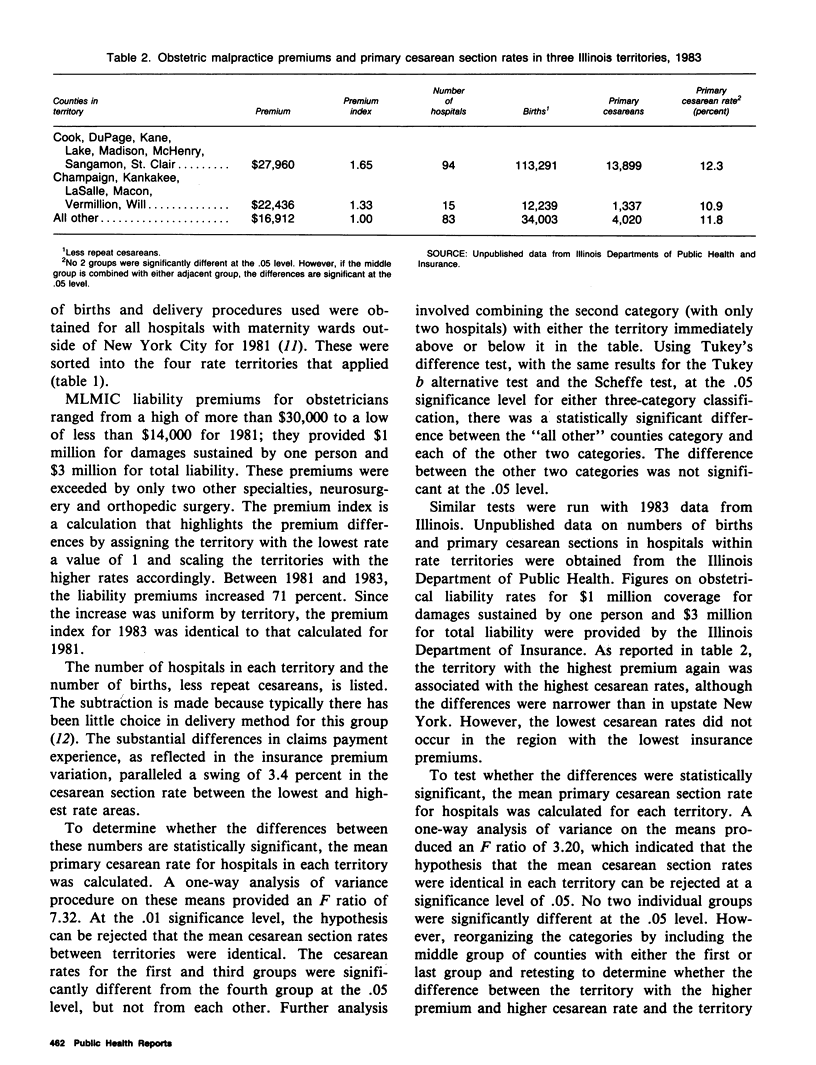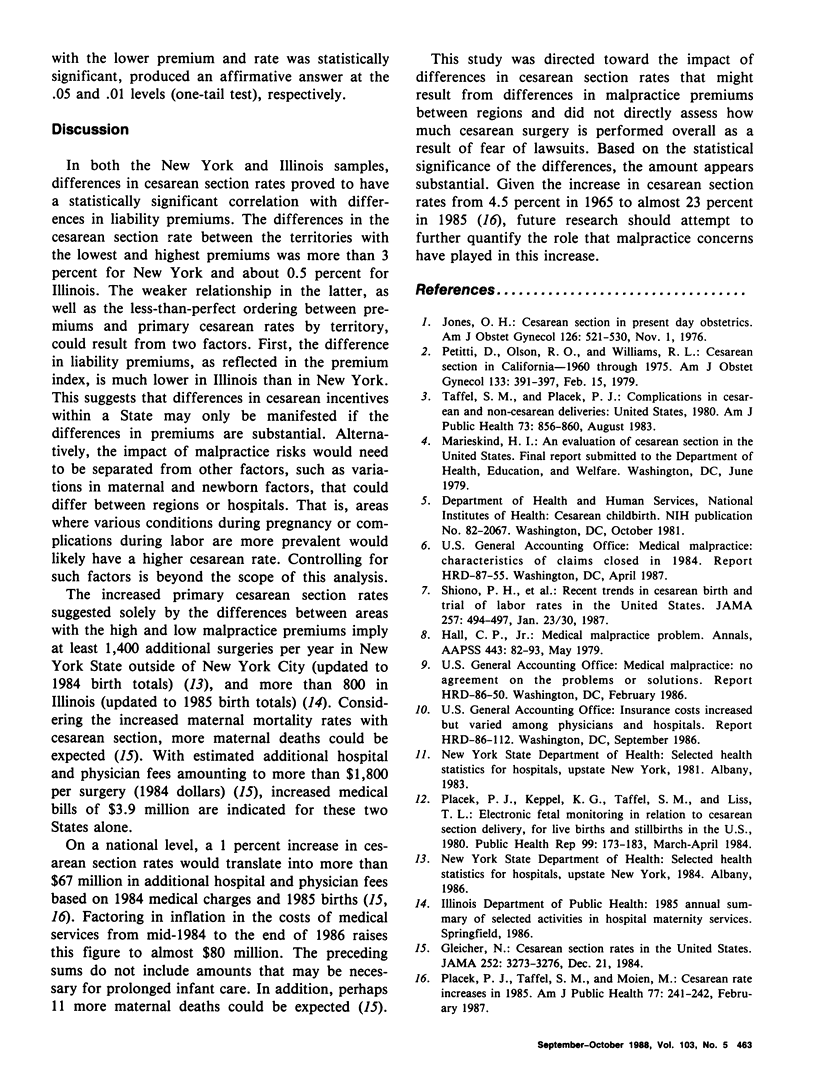Abstract
The fear of malpractice liability is mentioned frequently as a cause of increased cesarean section rates, but without quantitative investigations. This perception may be studied at an aggregate level by comparing malpractice insurance premiums, a proxy for liability risk, with primary cesarean section rates. Both New York and Illinois are divided into territories for insurance rates; the premium was uniform within each territory over the period studied for each specialty. Premiums for obstetricians were linked to birth and procedure data from New York and Illinois hospitals for 1981 and 1983, respectively, to determine whether there was a correlation between premium levels and the primary cesarean section rate. A statistically significant difference was found between mean cesarean rates by insurance premium territories in each State. A correlation was observed between increased insurance rates among territories and increased cesarean section rates. Based on these results, a substantial impact was found on delivery decisions resulting from the fear of malpractice suits.
Full text
PDF




Selected References
These references are in PubMed. This may not be the complete list of references from this article.
- Gleicher N. Cesarean section rates in the United States. The short-term failure of the National Consensus Development Conference in 1980. JAMA. 1984 Dec 21;252(23):3273–3276. [PubMed] [Google Scholar]
- Hall C. P. Medical malpractice problem. Ann Am Acad Pol Soc Sci. 1979;443:82–93. [PubMed] [Google Scholar]
- Jones O. H. Cesarean section in present-day obstetrics. Presidential address. Am J Obstet Gynecol. 1976 Nov 1;126(5):521–530. doi: 10.1016/0002-9378(76)90742-0. [DOI] [PubMed] [Google Scholar]
- Petitti D., Olson R. O., Williams R. L. Cesarean section in California--1960 through 1975. Am J Obstet Gynecol. 1979 Feb 15;133(4):391–397. doi: 10.1016/0002-9378(79)90058-9. [DOI] [PubMed] [Google Scholar]
- Placek P. J., Keppel K. G., Taffel S. M., Liss T. L. Electronic fetal monitoring in relation to cesarean section delivery, for live births and stillbirths in the U.S., 1980. Public Health Rep. 1984 Mar-Apr;99(2):173–183. [PMC free article] [PubMed] [Google Scholar]
- Placek P. J., Taffel S. M., Moien M. Cesarean rate increases in 1985. Am J Public Health. 1987 Feb;77(2):241–242. doi: 10.2105/ajph.77.2.241-a. [DOI] [PMC free article] [PubMed] [Google Scholar]
- Shiono P. H., Fielden J. G., McNellis D., Rhoads G. G., Pearse W. H. Recent trends in cesarean birth and trial of labor rates in the United States. JAMA. 1987 Jan 23;257(4):494–497. [PubMed] [Google Scholar]
- Taffel S. M., Placek P. J. Complications in cesarean and non-cesarean deliveries: United States, 1980. Am J Public Health. 1983 Aug;73(8):856–860. doi: 10.2105/ajph.73.8.856. [DOI] [PMC free article] [PubMed] [Google Scholar]


